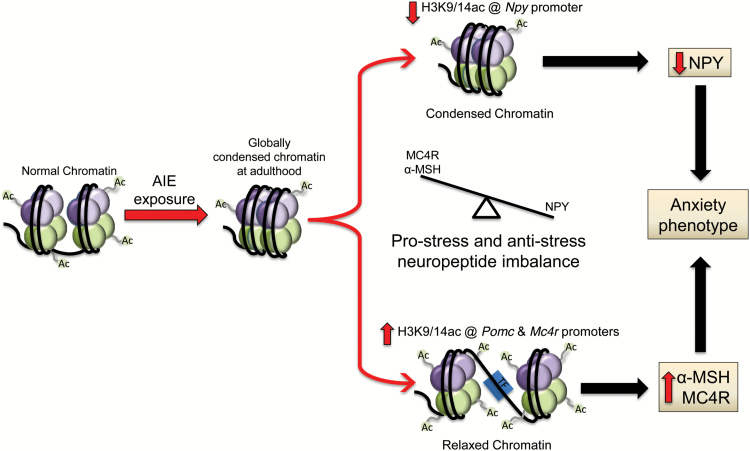Figure 7.
Adolescent intermittent ethanol (AIE) exposure produces global deficits in histone acetylation due to increased histone deacetylase (HDAC) activity in adulthood, leading to a condensed chromatin structure in the amygdala (Pandey et al., 2015). This model indicates that neuropeptide Y (Npy) gene promoter histone acetylation is decreased, which is associated with decreased NPY expression in the amygdala by AIE in adulthood. On the other hand, AIE produces increased histone acetylation at pro-opiomelanocortin (Pomc) and melanocortin 4 receptor (Mc4r) gene promoters in the hypothalamus and at the Mc4r gene promoter in the amygdala in adulthood. This leads to increased melanocortin activity due to increased alpha-melanocyte stimulating hormone (α-MSH) and MC4R expression. This epigenetically mediated imbalance in NPY and melanocortin activity in the amygdala may be associated with AIE-induced anxiety-like behaviors seen in adulthood. Ac, acetylation; H3K9/14, Histone H3 lysine 9/14; TF, transcription factor.

